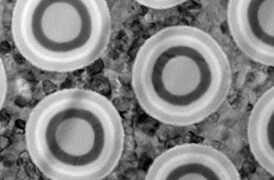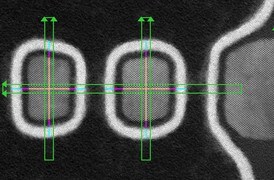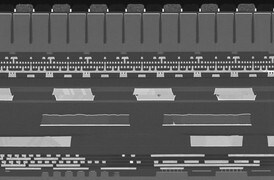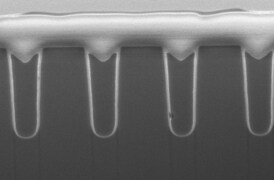Search Thermo Fisher Scientific
Advanced (scanning) transmission electron microscopy (S)TEM have become a necessary part of all leading-edge wafer-fabrication workflows due to an increasing demand for high-quality, rapid analysis and imaging of complex structures. Semiconductor designers need analytical tools that offer excellent flexibility and stability, as well as high-resolution imaging, in order to properly analyze and optimize device performance. (S)TEM characterization allows manufacturers to calibrate toolsets, diagnose failure mechanisms, and optimize overall process yields.
Beyond imaging, a range of techniques are available on (S)TEM instrumentation that are critical for semiconductor device characterization, including; electron diffraction, for crystal orientation mapping or strain analysis, energy-dispersive X-ray spectroscopy (EDS), for qualitative or quantitative composition analysis, and electron energy-loss spectroscopy (EELS), for compositional and chemical information. Additionally, advanced imaging techniques, such as electron holography, tomography, Lorentz imaging and (integrated) differential phase-contrast (iDPC/DPC) imaging, are also available and are now routinely used in semiconductor labs.
Thermo Fisher Scientific is the world leader in TEM workflows for metrology, analysis, and pathfinding in semiconductor devices thanks to an uncompromising combination of high-resolution imaging and high analytical performance. Click through to the appropriate product pages below to learn more.

Semiconductor Pathfinding and Research
Advanced electron microscopy, focused ion beam, and associated analytical techniques for identifying viable solutions and design methods for the fabrication of high-performance semiconductor devices.

Yield Ramp and Metrology
We offer advanced analytical capabilities for defect analysis, metrology, and process control, designed to help increase productivity and improve yield across a range of semiconductor applications and devices.

Semiconductor Failure Analysis
Increasingly complex semiconductor device structures result in more places for failure-inducing defects to hide. Our next-generation workflows help you localize and characterize subtle electrical issues that affect yield, performance, and reliability.

Physical and Chemical Characterization
Ongoing consumer demand drives the creation of smaller, faster, and cheaper electronic devices. Their production relies on high-productivity instruments and workflows that image, analyze, and characterize a broad range of semiconductor and display devices.

Power Semiconductor Device Analysis
Power devices pose unique challenges for localizing faults, primarily as a result of power device architecture and layout. Our power device analysis tools and workflows quickly pinpoint fault locations at operating conditions and provide precise, high-throughput analysis for characterization of materials, interfaces and device structures.

Display Module Failure Analysis
Evolving display technologies aim to improve display quality and light conversion efficiency to support applications in different industry sectors, while continuing to reduce production costs. Our process metrology, failure analysis and research and development solutions help display companies solve these challenges.
Semiconductor Materials and Device Characterization
As semiconductor devices shrink and become more complex, new designs and structures are needed. High-productivity 3D analysis workflows can shorten device development time, maximize yield, and ensure that devices meet the future needs of the industry.
Electron microscopy services for
semiconductors
To ensure optimal system performance, we provide you access to a world-class network of field service experts, technical support, and certified spare parts.







